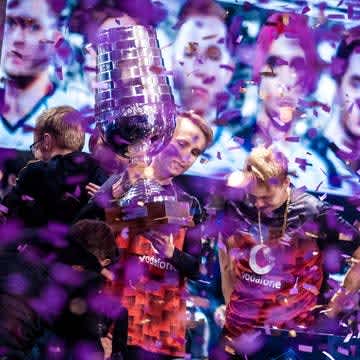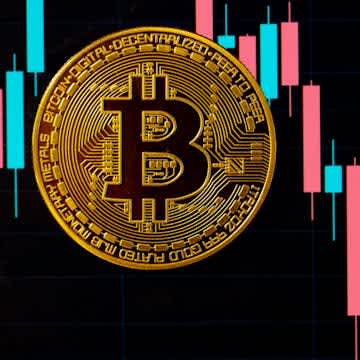Astralis against Liquid: a rivalry across time
One of the most remarkable aspects of the present pinnacle of CS:GO is the longevity of the two teams that have legitimate claims for an era. The same core of Astralis and Liquid remained close to the summit for almost two years at this point, and this kind of unprecedented breadth and depth gives us a chance to examine their rivalry from a long-term perspective.
A Counter-Strike epoch
Rarely do we get to take a step back and look at the bigger picture in the CS:GO scene. There’s simply too much upheaval to do so: the rapid rise and fall of orgs, the ever-growing influx of venture capital money, the map pool changes and the gameplay updates all make it difficult to tell a coherent story. In a circuit as open as fragmented as ours, dominance will always be disputable to some extent, the definition of “eras” watered and muddied based on which storyteller wields it at the time. We’ve seen many skirmishes but no all-out war, not like the one Astralis and Liquid served up over the course of the last two years as they elevated the game in many different ways, unflinching in their joint dominance. They split the two Intel Grand Slam titles handed out to date – widely considered to be an impossible task at the time of its original announcement. Two years later and two million dollars poorer, the organizers decided to make it even more difficult in light of their pristine accomplishments.
This isn’t the first time that we had two teams rise above the field – just consider the Fnatic-Luminosity battles of late 2015/early 2016 and NiP duking it out with VeryGames over the whole of 2013 – but this is the first time such supremacy stretched across multiple calendar years, going from strength to strength along the way. The two teams met each other on 25 different occasions since Magisk joined Astralis in February 2018, with only one roster change between them since. Nine of these clashes took place in grand finals. Though many in the fanbase were eager to brand Liquid chokers fairly early on, the fact is that they finished as runner-ups at seven different top-tier events last year, directly behind what is now widely considered to be the best team to ever play the game. No matter how you judge the topsy-turvy tale of 2019, their consistency the year before cannot be ignored if you want to examine the whole picture.
Head-to-head: the evolution
Truth be told, the topline numbers look horrendous for Liquid and don’t exactly help those who favor the notion that their mid-year dominance was an era instead of an aberration. Across the aforementioned 25 series, the North Americans have only won four, with a combined map difference of 43-15. Worse yet, only two of those wins came in best-of-three series, and just the one during the period where Liquid was briefly atop the world. The overtime Inferno win in the group stage of the FACEIT Major, the grand final turnaround at iBUYPOWER Masters 2019, a meaningless Overpass win at BLAST Pro Series Miami, then laying down the mark in the quarter-finals of the ESL Pro League Season 9 finals: these are the blue islands in the sea of red you need to build your case around. During the five months between their grand final victory on January 20 and arguably the most creditable of these victories in Montpellier on June 21, the two teams only met at two BLAST Pro Series events.
It’s fascinating to look at how the map vetoes evolved over time. Inferno, Nuke, Dust 2 and Overpass are the mainstays, but even the less-picked maps have a story to tell. For instance, Mirage was a mainstay of the matchup in early 2018, with Astralis winning it three times to Liquid’s two before the player break. Then, starting with the FACEIT Major semi-final, the Danes won it three times in a row in grand finals, and it hasn’t come up a single time since. Cache, widely considered to be Astralis’ worst map, only came up twice as the decider, first in DreamHack Masters Marseille 2018, where gla1ve and co. actually won it, and the ESL Pro League Season 7 Finals, where it didn’t end up getting played. Vertigo’s injection into the matchup has become a meta-story of its own, first seen as the decider of that fateful quarter-final match in Montpellier, then the big moment of the StarLadder Major which seemed to shift the sands. We’ve also seen it at ESL One New York – where Astralis won in a brawl –, and though Liquid managed to successfully spring it as a surprise at the ECS Season 8 Finals, the close nature of their overtime victory pushed them back to Inferno in the veto process.
Overpass, just like the other map choices made in late 2019, show Liquid running out of space: it was rarely played between them during the rise of Astralis, and when they did meet on the map, the Danes ended up taking the win. At the tail end of 2018, it was often used as the decider, one which rarely came up due to the Danes’ comprehensive victors. Famously, Liquid failed to win a single best-of-three series against this Astralis side in 2018, and this was part of why it was such a big deal to see Liquid win their first grand final over tem at iBUYPOWER Masters IV: Overpass was the deciding map there.
Since then – even with the limited dataset for the first half of the year –, the map went back-and-forth between the two until the player break, with Astralis having the last word on the matter by taking it in Montpellier before losing both remaining maps in the series. They also managed to win it at the Berlin Major, and though Liquid decided to pick Dust 2 instead in New York, it still came up as the decider, where it was once again won by Astralis. It hasn’t come up in the four matches they’ve played since.
This also serves to highlight how many different Astralises and different Liquids squared up against one other across this period: the ebb and flow of expectations played a visible part in how this matchup unfolded over time, and it’s fascinating to look at how the maps and stats changed as the landscape shifted under the players’ feet over time. Mentality, metagame, memories: when the mechanical skills are so pristine, these are the factors that begin to determine the victor. No wonder Twistzz specifically pointed out in his recent HLTV interview how Astralis “is really great at making [him] feel useless”: the shared history inevitably begins to play a part and weigh you down once it reaches a critical mass.
2019: the revolution (and the crackdown)
For the first half of 2018, this didn’t yet emerge as the premiere rivalry of CS:GO. It was the Pro League Season 7 Finals directly followed by the ECS S5 Finals which cemented it as such, a sort of consistency which only grew stronger as the year went on. The fact they finally took their chance at the chaotic iBUYPOWER Masters IV event this January seemed like the beginning of a new chapter.
It indeed was, but not in the way we’ve expected: the Danes went on to dominate the field in Katowice, laying down the gauntlet for everyone to see in a flawless run through the entire major. Liquid, meanwhile, fell to ENCE in the quarter-finals, denying us the clash of the titans. Then, silence: Astralis slowly receded from the circuit and they haven’t met until June, where Liquid’s win in Montpellier essentially confirmed the fact that gla1ve and co. have fallen off their peak. (It is nevertheless worth pointing out the monster performance from EliGE, who finished the series with a +29 K/D, the only time he'd reach double digits in any of the 25 encounters we've discussed. His overall K/D in these matchups is -118: by comparison, device's is +253, Magisk's is +179, NAF's is -16 and nitr0's is -234.)
The player break seemed to change everything. It’s the hallmark of champions to be able to grind out wins when they’re not at their best, and Astralis marked their return at Berlin with a uniquely subdued performance. It was not lost on observers that the team widely regarded to boast the best tactics and deepest map pool relied on a Vertigo curveball to blindside Liquid. It was not a vintage performance which won them their fourth major (and the third back-to-back), but it kickstarted yet another period of dominance for the Danes. Since then, Astralis are 5-0 overall against their North American counterparts, running into them over and over again now that they’re both back to actively participating in the circuit. No doubt a new chapter will be written in early 2020, and from Liquid’s perspective, it could very well be the epilogue. The team that briefly conquered the world with the irresistible mix of confidence and firepower is now lacking both, and questions are being asked as creditable rivals begin to rise. In Bahrain, dupreeh went on record saying “2020 is going to be somewhat of a test year”: the same holds just as true for their North American counterparts.
This is where we could end on a hopeful note, highlighting the rapid growth and professionalization of the scene and the potential of these players to carry on like this for a very long time. Instead, I’d like to leave you with a word of caution. Ignore the money, the fame, the current advantages these teams seem to boast over the rest of the field: as Astralis’ mid-year slump has shown, motivation is the most finite resource on the top. For those who felt like so many back-to-back series between the two was getting a bit too much – especially once they’ve started to run the same maps – I’d recommend you enjoy every moment of this battle for supremacy and savor its history. Who knows how much longer it will last?
Photo credit: HLTV
Read more
From the BLASTzone to the cs_summit – what’s the expectations game?








